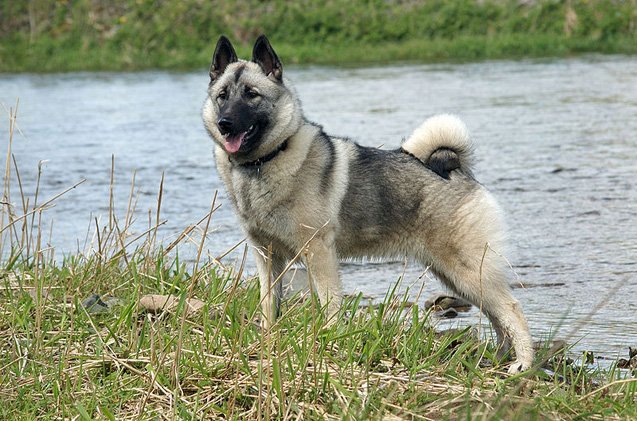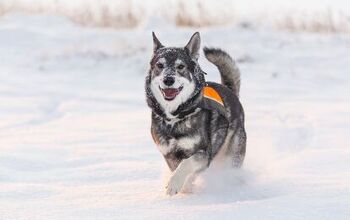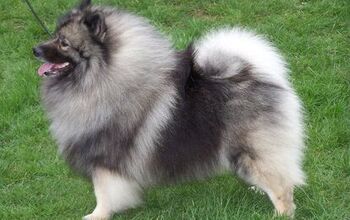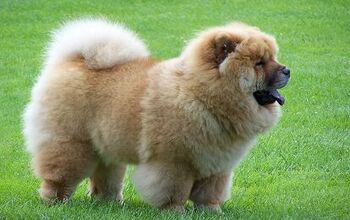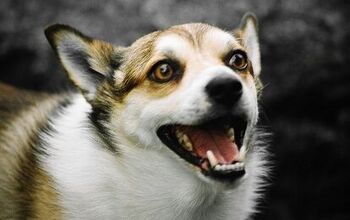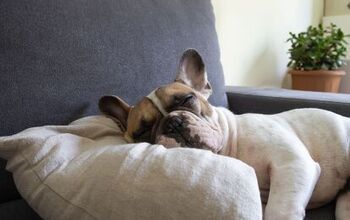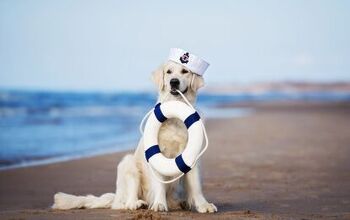Norwegian Elkhound


About Norwegian Elkhound
The Norwegian Elkhound is a friendly soul but he is also independent and dignified by nature. Simply by his breed, it should be obvious that the Norwegian Elkhound was bred to take down Elk, but he was also bred to hunt bear and other large, wild game. His incredible stamina made him perfect for the job.
Although he is a fierce hunter, he is a kind, gentle and loving soul with his family and friends. Many Norwegian Elkhound enthusiasts believe that this is an empathetic dog, stating that the dog can sense when you are upset and do all that he can to make you feel better. The Norwegian Elkhound is a great companion for energetic and fun-loving families. Read on to learn more about the Norwegian Elkhound.
The Norwegian Elkhound is a friendly soul but he is also independent and dignified by nature.
Originating in Scandinavia, the Norwegian Elkhound is an ancient breed. He was a prized hunter, guardian and companion. Skeletal remains of these feisty dogs have been found in the Northern part of Norway. These remains date back to 5,000 BC!
The Norwegian Elkhound’s developmental history is unknown as there are no written records dating back to the breed’s beginning. These dogs have not changed in millennia.
Because the Norwegian Elkhound is athletic and energetic, he needs a high quality diet of dry dog food specifically created for his energy level. The dog’s breeder or veterinarian will be able to help you decide which brand and type of food is best for your particular dog.
Norwegian Elkhounds are very smart dogs however; they tend to be quite stubborn too!
Norwegian Elkhounds are very smart dogs however; they tend to be quite stubborn too! It is absolutely essential that the dog have some form of training or he will overtake the house and attempt to dominate everyone. Consistency is the key to training. Short and regular training sessions are most productive when working with Norwegian Elkhounds. The reward system works best so be sure to have plenty of tasty treats while training.
Many Norwegian Elkhound owners train their dogs to compete in AKC Obedience Trials. Of course, this takes a lot of time and hard work but it can be rewarding for both dog and human. Some people even train their dogs to become Therapy Dogs and visit ailing people in hospitals and rehabilitation centers. Another great activity for Norwegian Elkhounds is agility training. This is a great outlet for their energy and they get to use all of their muscles that were originally developed for hunting elk and moose.
Norwegian Elkhounds are between 19 and 20 inches tall at the shoulder and can tip the scales at up to 55 pounds.
The Norwegian Elkhound is well-known for his friendly nature and outgoing personality. He loves people however; he has a unique ability to tell which people are welcomed guests and which are unwanted. Very protective of his family, he makes an awesome watchdog. Barking is the Norwegian Elkhound’s forte. He loves to bark and will simply bark because he likes the sound of his own voice! It is imperative that he be trained to be quiet on command or he will drive you crazy.
A family-oriented breed, the Norwegian Elkhound craves affection. Many suffer from separation anxiety which could lead to the dog becoming destructive of your possessions. Exercise and plenty of toys can help to minimize his anxiety. This breed does not fare well when left alone for long periods of time.
Although a generally healthy breed of dog, the Norwegian Elkhound is predisposed to a variety of health issues. PRA or Progressive Retinal Apathy is a problem that is fortunately dwindling in the breed. This is due to diligent breeders ensuring that their breeding stock is clear of the problem. Other health problems include Fanconi Syndrome, Hypothyroidism, Chondodysplasia, Ectropion, Cataracts and Primary Glaucoma. Be sure to ask the breeder to see a copy of their dogs’ health clearances.
The average Norwegian Elkhound lives between 12 and 15 years.
Norwegian Elkhounds are high energy dogs and they need lots of exercise to keep them happy and healthy. Several long walks daily will be beneficial to both human and dog however; the Norwegian Elkhound also needs running time as well. At least an hour of heavy playtime will suffice. Because of his desire to run and play, coupled with his love of family, make the Norwegian Elkhound the perfect pet for experienced dog owners with children. After vigorous play, this wonderful companion will be happy to curl up with you on the couch and take a well-deserved snooze!
The Norwegian Elkhound is well-known for his friendly nature and outgoing personality.
The American Kennel Club writes: “A solid, sturdy hunter of elk, bear and other wild animals, the Norwegian Elkhound has a temperament that is dignified, independent and generally, friendly”. The Norwegian Elkhound was recognized by the AKC in 1913.
The Norwegian Elkhound’s coat is quite beautiful. It is a double coat of thick fur that protects his from cold, wet weather. Its undercoat is soft and wool-like while the outer coat is short. The coat is generally medium gray in color with black tips. The saddle area is usually darker gray. Most Norwegian Elkhounds have black tips on their ears and tails.
A thorough weekly brushing is all that is needed to keep the Norwegian Elkhound’s coat in good shape. That is until the dog sheds. When the dog is shedding, daily brushing is indicated. Without proper brushing, the thick coat can mat. This will require a trip to the groomer and will more than likely result in the dog being shaved. Bathing is only necessary when the dog gets filthy or rolls in something malodorous.
Norwegian Elkhound puppies are absolutely precious but they will grow up to be headstrong without proper training. Puppy kindergarten classes should be started as soon as your puppy has been vaccinated and your veterinarian tells you it is safe to go. These classes will help you to bond with each other as well as let the puppy know that you are the one in charge of your home and family. Puppy kindergarten is the prerequisite for all of the things that your dog will learn throughout his life.

Amy Tokic, Editor of PetGuide.com, is a passionate animal lover and proud pet parent of Oscar, a Shih Tzu/Chihuahua cross, and Zed, a Japanese Chin. Her love of animals began in kindergarten, when she brought her stuffed dog Snoopy into class with her every day. Now, she writes about her adventures in pet ownership and tirelessly researches products, news and health related issues she can share with other animal enthusiasts. In her free time, Amy loves perusing used book and record stores, obsessing over the latest pet products available and chasing squirrels with wild abandon (a habit attributed to spending too much time with her pooches).
More by Amy Tokic



